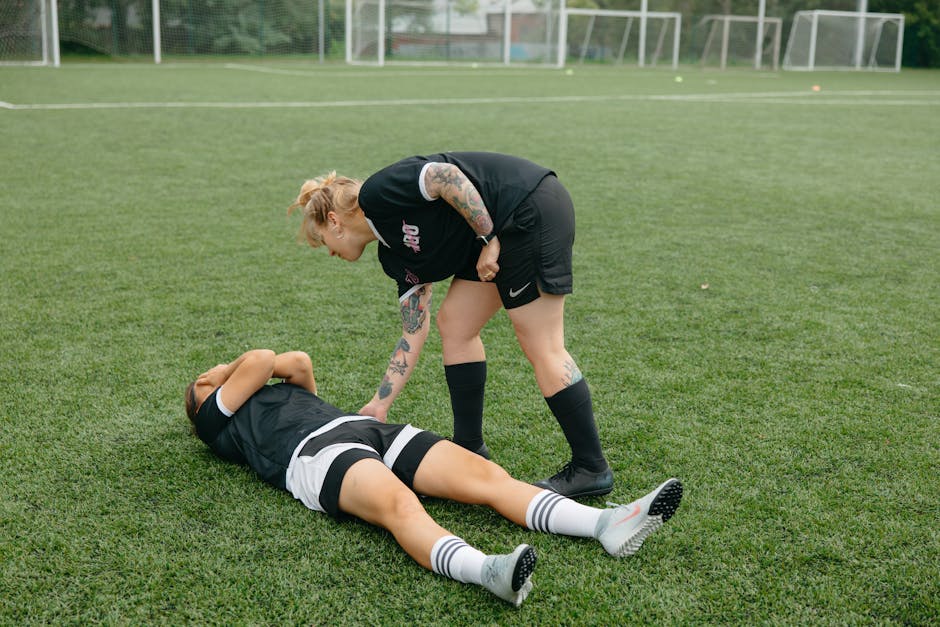Understanding the Recovery Process
Recovery isn’t one-size-fits-all, and trying to force it into a neat, generic timeline usually backfires. Every athlete’s body responds differently based on the type of injury, training history, age, and overall health. What healed your teammate in four weeks might take you six—or two. There’s no cheat code. Respect your own pace.
Injuries follow a general repair roadmap: inflammation, repair, then remodeling. The inflammation stage is body armor mode—swelling, pain, and rest dominate. Then comes repair, where new tissue begins to form. This is when movement starts to sneak back in. Finally, remodeling strengthens and aligns the healing tissue so it can handle real-life stress again. Shortcut this process, and you’re asking for round two.
The tricky part is knowing when to listen to your body—and when it’s just being dramatic. Being sore doesn’t always mean stop. But sharp, stabbing pain? That’s a signal, not a suggestion. Pushing too hard, too early leads to setbacks, not progress. Learn to distinguish discomfort from danger. Smart recovery means playing the long game, even if your ego wants to sprint.
Tip 1: Prioritize Rest Without Going Stagnant
Recovery starts with rest—but not the kind where you melt into the couch and disappear for weeks. Proper rest is strategic. It gives your body a break from stress and inflammation, which is crucial for tissue repair. Sleep deeper. Reduce unnecessary load. And stop trying to train around the injury as if nothing happened. Healing needs space—but also direction.
That’s where active recovery steps in. Gentle walking keeps blood moving without overloading joints. Low-intensity mobility work maintains your range of motion. Water therapy—like pool walking or aquatic stretching—can help decompress your body while staying active. These low-impact movements support circulation, fend off stiffness, and keep your nervous system engaged.
The trap most athletes fall into? Coming back too soon. A few pain-free days don’t mean you’re game-ready. Rushing can drag out recovery—or set you back further. The goal isn’t just to feel better. It’s to come back stronger, more stable, and less likely to end up here again. Slow down. Move smart. Respect the timeline.
Tip 2: Rebuild with Purposeful Rehab
Working with a physiotherapist isn’t just for pro athletes. It’s one of the smartest moves you can make during recovery. These professionals understand how to guide the body back without pushing it too hard—or letting it stall out. A good physio program keeps you progressing while staying safe.
The main rehab goals? Regain flexibility so the joint or muscle moves freely again. Build strength to support your movements. And develop neuromuscular control—that’s your brain and body syncing back up. It all sounds basic, but doing it right is far from casual.
Every injury is different, so copying drills off YouTube won’t cut it. The best rehab is tailored to the specific damage. A hamstring strain doesn’t rehab like a rolled ankle. A shoulder dislocation has a different roadmap than a stress fracture. The physiotherapist’s job is to map this out and adjust the plan as you heal. You do the work—but you don’t have to guess the steps.
Tip 3: Fuel Recovery with Smart Nutrition
Recovery isn’t just about staying off the field. What goes into your body matters just as much as what you do with it. Good nutrition drives tissue repair, manages inflammation, and supports immune function—all key components of coming back stronger.
Start with the basics. Protein is essential—it helps rebuild muscle and connective tissue. Lean meats, dairy, eggs, legumes, and plant-based alternatives should be part of the daily plan. Carbs are your fuel source; don’t cut them. Whole grains, fruits, and starchy vegetables help refill glycogen stores and support energy for rehab work.
Fat plays a role too—but go for the anti-inflammatory kind. Think olive oil, fatty fish, nuts, and seeds. Then zoom in on the micros: Vitamin C for collagen, zinc for cell repair, vitamin D and calcium to support bone health. Hydration rounds everything out—water isn’t optional when your body’s trying to rebuild.
Bottom line: you can’t out-train—or out-rehab—a poor diet. Treat food as part of your recovery strategy. For deeper insights, check out Essential Nutrition Tips for Optimal Athletic Performance.
Tip 4: Stay Mentally in the Game
Getting pulled out of action is tough. Physically, sure—but mentally, it hits harder. The loss of routine, adrenaline, and identity as a competitor can leave a gap that’s hard to fill. That headspace matters just as much as muscle or ligament repair, and ignoring it slows everything down.
First, don’t pretend it’s fine if it’s not. Feel it, own it, then move forward with intention. Visualization helps here—not just imagining being back on the field, but walking through game scenarios, reps, recoveries. Keep your mind practicing even if your body can’t yet.
Next, set short goals. Not lofty “I’ll be back by next season” dreams, but weekly missions you can track. Mobility milestones. Mental reps. Rehab benchmarks. Purpose replaces frustration.
Above all, stay connected. Isolation only deepens the funk. Touch base with teammates. Text your coach. Talk to others who’ve been through it. Recovery is a team sport, even if it feels solo. Let others help keep your head in the game—even from the sidelines.
Tip 5: Track Your Progress, Adjust as Needed
Recovery doesn’t follow a straight line. Some days move fast, others stall out. That’s why setting realistic checkpoints matters. Not every week will bring a breakthrough—but every couple of weeks should show something measurable. Maybe that’s more range in your joint, a little less pain going up stairs, or fewer flare-ups. These checkpoints give you feedback. If things flatline for too long, it might be time to pivot.
Journaling plays a big role here. It doesn’t have to be anything poetic. Just short notes on what you did, how things felt, and any symptoms that stood out. Over time, patterns emerge. You’ll start to see what’s helping—and what’s hurting. This puts you in the driver’s seat, not guessing, but adjusting with intention.
When to seek re-evaluation? Trust your gut. If your progress has stalled for weeks, if new pain shows up, or if something just feels off—get eyes on it. A good clinician can either reset your plan or rule out complications. Recovery is adaptive, not rigid. Be honest with where you’re at, and stay willing to adjust the game plan.
Long-Term Strategy: Injury Prevention Starts Now
Recovery doesn’t stop when the pain does. Once you’re cleared to return to training, the real work begins. Post-recovery is when many athletes either rebuild stronger—or set themselves up for a repeat injury.
Start by identifying the root causes. Was it a technique breakdown? Muscle imbalance? Pushing volume before building stability? A qualified coach or rehab specialist can spot flaws that contributed to the original injury. Don’t guess—assess.
Next up: prehab. Think of this as maintenance work. It’s the daily grind that keeps you in the game. This means mobility drills, soft tissue work, activation exercises—consistent, bite-sized routines that target your weak links before they become problems.
And finally, reframe how you see recovery. It’s not a detour—it’s part of your training cycle. Recovery isn’t passive. It’s adaptive, active, and essential. Ignoring this long-term mindset leads back to square one. Staying healthy isn’t luck. It’s daily, boring, strategic work. Embrace that.
Bottom Line
Getting injured can feel like hitting a wall—but it’s not the end. It’s a pause, a hard one, but it opens the door to rebuilding smarter and stronger. Injuries don’t define an athlete. How you come back from them does.
A smart recovery plan isn’t just about waiting it out. It’s active. It’s intentional. The more you respect the process, the faster you return. The goal isn’t just to get back—it’s to stay back. That means fixing what led to the injury in the first place and not skipping steps because you’re tired of sitting on the sideline.
Patience isn’t passive, it’s part of the grind. Stick to the rehab. Double down on the basics. Pay attention to your body. Every stretch, every meal, every hour of rest counts. Treat recovery with the same focus as training. Because whether you’re aiming for a comeback or your next PR, the work starts now.




